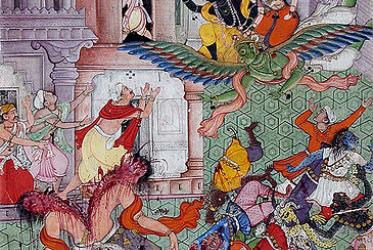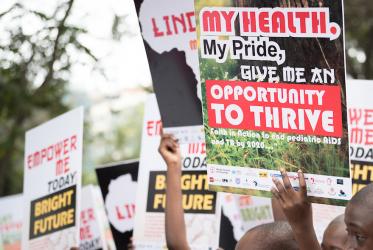When the World Council of Churches Assembly in 2013 called for a pilgrimage of justice and peace, it explicitly addressed not only Christians but invited people of good will everywhere to join. It recognized the gifts our interfaith partners have received from God and challenged them to engage them in transforming actions. From this year, alongside our tradition of offering greetings to interreligious partners during major festivals, we are inviting scholars and believers from different traditions to reflect on those festivals from the perspective of justice and peace. Therefore, on the occasion of the Hindu festival of Diwali, we learn from Prof. Anantanand Rambachan about the story of Rama and Ravana.
“Religion,” the American theologian Paul Tillich once said, “is the substance of culture and culture the form of religion.” This is particularly true of Hinduism, with the result that a religious dimension can be discerned in almost all of the festivals that originate in India. Diwali, the festival of lights, the most popular and widely celebrated Hindu festival, is no exception.
It will not surprise us to know, given the antiquity of Diwali and the diversity of India, that the traditions associated with it are many. Some celebrate Diwali as ushering in the New Year and the beginning of a new business calendar. It is an occasion of thanksgiving for blessings received and prayer for future well-being.
The most widely shared tradition, however, associated with Diwali, is the one that connects the festival with the celebration and rejoicing over the return of Rama to his home, after a lengthy exile, and his defeat of the oppressive and tyrannical, Ravana. Citizens welcomed him by lighting thousands of lamps, even as over one billion Hindus do today on the continents of Asia, Africa, Australia, the Americas and Europe.
The story of Rama has become, perhaps, the central narrative of Diwali because it addresses, universally, the human longing for freedom from tyranny and oppression and the hope of living in a world where there is no fear and where the fullness of the human potential can be realized. Since this is what Diwali is truly about, let us linger on the story of Rama, for a moment.
Ravana established and maintained a rule by the exercise of fear and violence. He was intent on conquering and imposing his will throughout the world, enslaving others and depriving them of freedom. The practice of religion was prohibited and brutally suppressed. We get the picture of a spiritually arid land ruled by a tyrant with no value for the sanctity of human life and property.
The defeat of Ravana by Rama, and liberation from oppression, are not the only reasons for the rejoicing and celebration that are central features of Diwali. Rama is represented as establishing and providing a model for a new society that was radically different from the one imposed by Ravana.
In the new kingdom, the state is no longer violent and oppressive towards its citizens. Nations live at peace with other nations, suffering is overcome and human relationships are characterized by love, compassion and generosity. People are free to realize and express their unique human gifts in the service of each other.
The kingdom of Rama was the inspiration for Mahatma Gandhiji’s vision of an ideal human community that was all-inclusive and committed to the removal of the fundamental sources of human suffering.
We are not surprised that the Hindu tradition has invested Rama with the attributes of divinity and understood his rule as a vision of what a human community looks like when God is recognized as supreme and ultimate. The kingdom of Ravana, on the other hand, reveals what becomes of community when God is displaced by human tyranny.
Diwali endures as a reminder that the struggle between the kingdoms of Rama and Ravana is one that occurs inwardly daily in the human heart and outwardly throughout the world in efforts of those who labor and sacrifice for freedom, justice and human dignity.
The lights of Diwali are the inextinguishable flames of faith and hope in the ultimate triumph of goodness over evil and the assurance that, in this perpetual struggle, we choose to side of God. These lights also testify to our human yearning for a world that is free of hate and fear and where there is abundance of compassion and happiness. These are the aspirations articulated in Hindu prayer that is commonly recited during this season of Diwali.
Asato ma sad gamaya
Tamaso ma jyotir gamaya
Mrityor ma amritam gamaya
Sarve bhavantu sukhinah
Sarve santu niramayah
Sarve bhadrani pashyantu
Ma Kaschid dukhamapnuyat.
Aum Shanti Shanti Shanti
God:
Lead us from untruth to truth
Lead us from darkness to light
And lead us from death to immortality
May all be happy
May all be free from misery
May all be filled with goodness
And may there be an end to all suffering.






